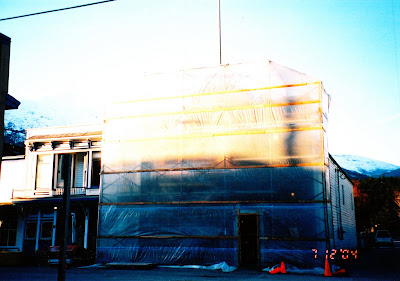
From what I can tell there were at least three Frank Browns in Skagway. Frank W. Brown died on this day, June 19, 1907 in Skagway. Frank Edward Brown worked for White Pass in 1920. One Frank Brown was deported from Skagway after the Soapy roundup in 1898. But the most interesting story about Frank Brown is the one from 1988.
On January 26, 1988, the motorvessel Frank H. Brown, a 1965 Canadian cargo and fuel carrier was docked at the White Pass dock. This was one of the first container ships created but it must have lacked some safety features which are common today. That morning someone noticed the smell of gasoline and discoloration of the water around the stern tank of the ship. This tank had capacity of 124,000 gallons of fuel. Actions were immediately initiated to offload the tank to shoreside facilities. At the onset of the incident the wind was calm. However, by 10 a.m. the wind had built to nine knots from the north and continued increasing throughout the day. Response crews from the White Pass Transportation Co. initially boomed off the vessel but shortly thereafter opened the boom to avoid a fire hazard, on the advice of the U.S. Coast Guard. It was estimated that 2800 gallons of gasoline spilled into the harbor. Today Skagway still receives thousands of gallons of fuel and transfers it to fuel trucks which take the fuel to Whitehorse every day.
Seen above is the predecessor to the Brown, the Clifford Rogers as it unloads and loads containers (also invented by White Pass) to be loaded onto the train. This photo is from 1957 but is essentially the same as it was into the 1980’s.
USCG district 17. Government report 6547 online.









